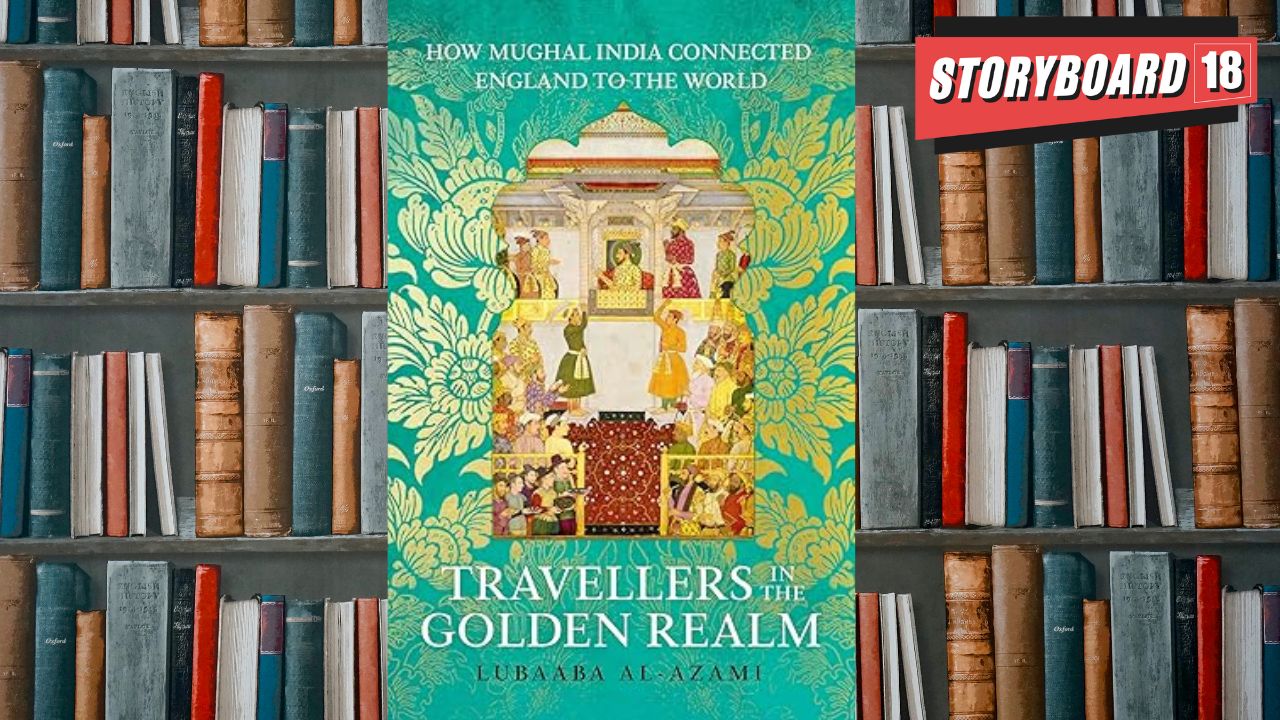A pre-Raj tale of bumbling British excursions?
Here is a book that is almost a fun take on the prehistory to the British Raj! A curious motley crew of English characters made their way to India, during the 16th and 17th centuries. This was during the heydays of the Mughal Empire, when the English sent ambassador after ambassador to seek favour and set up trade with the Mughals! The Mughals however, couldn’t be bothered! Why so? Mughal India was the world’s largest economy matched only by that of China! Throughout the 17th century, the region’s GDP surpassed the combined GDP of Western Europe – who were crippled by debt and dependent on trade. (What about per capita income though?)
Mughal India was a saviour for its first English arrivals. And yet, ironically enough, the book ‘Travellers in the Golden Realm’ by Lubaaba Al Azami says that the first English arrivals in India were inspired- by neither commerce nor trade- but by the conflict between Protestants and Catholics! Has been covered before, but Al Azami does it anecdotally with a dash of humour.
Here are our five #Bookstrapping insights:
1. Al Azami says that India’s reputation as an early paradise was built on the abundance of glinting gold and precious gemstones in her bountiful mines, even as India’s spices were fabled as a fountain of youth. It was not uncommon for the subcontinent to be referred as gold-fingered India. And when Vasco da Gama reached India in 1498, the idea of India moved from imagination to reality.
2. The book suggests that Babar’s conquest of India had much to do with the confidence instilled in him by his grandmother! Thus it came about, that in the 16th and 17 centuries, there were three leading Islamic Empires in the world- the Turkish Ottoman Empire, the Persian Safavid empire and the Indian Mughal empire. However, only in India did the rulers govern as a religious minority.
3. That the British East India company launched in 1600 in India is well known. Here is a book that dials back time to when the Pope excommunicated Elizabeth-I (thanks to her protestant leanings) via a diktat in 1570! Elizabeth-I had no choice but to make a pragmatic decision. To sustain her nation, she had to seek fresh trade partnerships beyond Catholic Europe – and one of the lands she chose was India. Makes sense!
4. In the tradition of Babar’s strong grandmother, Humayun too was protected by his steely aunt, until a strong Akbar took over and consolidated the empire. Akbar professed curiosity for all religions, from Jesuits to Jains, Muslims and Hindus! In contrast, the Portuguese were ruthless; destroying over 300 temples and converted 8000 Brahmins to Christianity in Goa – projecting themselves as strenuous and zealous soldiers of Christ! The locals therefore were against the Christian faith, even as the one of the first English travellers Thomas Stephens learnt the local languages and started writing poetry in Marathi.
5. It was in this curious climate – when the Mughals were at their peak and the East India company faced one embarrassing defeat after another- Sir Thomas Roe for instance – one realises what a miracle it was, that the Company survived the 17th century. The 18th century of course- after the death of Aurangzeb in 1707, became a very different story!
It is well known that the English coming to power was a series of underhanded dealings. In the authors own words, “17th century networks of slave trading, commerce and colonialism are interconnected and complex!” However, Al-Azami deflates the English excursions during the Mughal Empire, thoroughly and definitively. I referred back to two books while I read this one, The Shortest History of India by John Zubrzycki and The British in India: Three Centuries of Ambition and Experience, by David Gilmour, and found some interesting parallels.
I also found that Al Azami has referenced a few rare sources- as compared to the other books about this period, which was an eye-opener. A few new themes for discussion put out there perhaps?
Reeta Ramamurthy Gupta is a columnist and bestselling biographer. She is credited with the internationally acclaimed Red Dot Experiment, a decadal six-nation study on how ‘culture impacts communication.’ Asia’s first Reading Coach, you can find her on Instagram @OfficialReetaGupta
